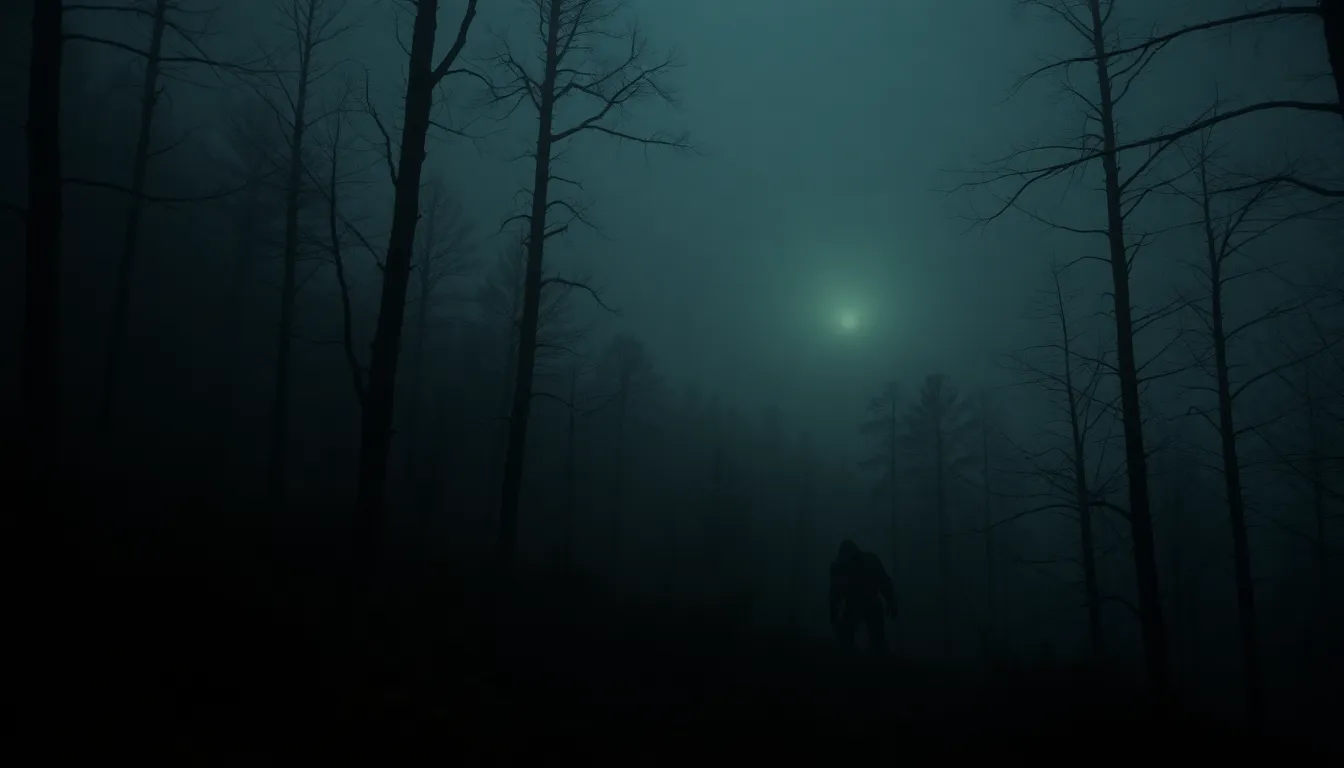Table of Contents
ToggleThe Appalachian Mountains may seem like a postcard-perfect getaway, but don’t let those rolling hills fool you. With dense forests, unpredictable weather, and a history steeped in folklore, these mountains have a knack for sending shivers down spines. Picture this: you’re hiking along a serene trail, and suddenly, the air turns eerily still. Is that a ghostly whisper or just your imagination?
The Appalachian Mountains: An Overview
The Appalachian Mountains span approximately 1,500 miles, stretching from Georgia to Maine. Known for their rugged beauty, these mountains display dense forests, winding trails, and vibrant wildlife. Elevations can reach up to 6,684 feet at Mount Mitchell, the highest peak in the range. Such heights often create diverse climates, resulting in unpredictable weather conditions that can shift rapidly.
Numerous parks, such as the Great Smoky Mountains National Park, preserve their unique ecosystems, showcasing diverse flora and fauna. Rich folklore captivates both locals and visitors, with tales of ghostly apparitions and mythical creatures adding to the mountains’ mystique. Many hikers report an unsettling stillness enveloping the trails, leading to feelings of eeriness during remote walks.
The region’s history contributes to its spooky reputation. Settlers, miners, and adventurers once traversed these mountains, leaving stories behind that echo through the valleys. Today, those who explore the Appalachian Mountains may encounter abandoned towns, eerie ruins, or remnants of past civilizations. Each of these elements intertwines to create an atmosphere that can feel haunting.
Natural wonders attract tourists, but underneath the surface, the mountains hold secrets. Expeditions into the untouched wilderness can evoke unease, especially when one feels isolated from civilization. Visitors might find comfort in the beauty surrounding them, yet the pervading sense of the unknown adds a layer of thrill. Together, these attributes make exploring the Appalachian Mountains both mesmerizing and slightly frightening.
Mysterious Legends and Folklore

The Appalachian Mountains are steeped in legends and folklore that evoke a sense of mystery. Various tales, passed down through generations, capture the imagination and fear of those who hear them.
Ghost Stories of the Appalachian Mountains
Ghost stories abound in this region, captivating locals and visitors alike. The tale of the Brown Mountain Lights draws attention, as strange orbs of light appear near Brown Mountain for centuries, baffling onlookers. In addition, the haunted tales of old mining towns depict restless spirits wandering abandoned structures, mourning their past lives. Ghostly encounters such as these cling to the land, enhancing the eerie atmosphere of the mountains.
Cryptids and Urban Legends
Cryptids often stir curiosity, with reports of Bigfoot sightings generating intrigue in rural areas. Locals frequently recount encounters with this elusive creature, claiming to have spotted it lurking in the shadows of dense forests. Additionally, the legend of the Wampus Cat, a half-woman, half-cat creature, strikes fear as it roams the hills in search of prey. Urban legends like these contribute significantly to the unsettling vibe permeating the Appalachian landscape.
Natural Dangers in the Region
The Appalachian Mountains hold multiple natural dangers that can make exploring them unsettling. Wildlife encounters and extreme weather conditions significantly contribute to this eerie reputation.
Wildlife Encounters
Wildlife in the Appalachian Mountains ranges from harmless creatures to potentially dangerous animals. Bears, for example, roam in several national parks, presenting risks during hikes or camping trips. Encounters with venomous snakes like copperheads create additional trepidation for visitors. Additionally, truly unexpected meetings with wild boars can provoke fear. Knowing how to behave in these situations enhances safety and minimizes danger.
Extreme Weather Conditions
Extreme weather attributes to the frightening nature of the region. Sudden thunderstorms can roll in, transforming sunny days into hazardous conditions. Severe snowstorms occur in winter, leading to treacherous hiking and driving conditions. Fog often blankets the mountains, reducing visibility and disorienting travelers. Understanding these unpredictable weather patterns proves crucial for anyone venturing into the area.
Isolation and Terrain Challenges
Exploring the Appalachian Mountains presents unique isolation and terrain challenges that amplify their intimidating allure.
Rugged Landscapes
Rugged landscapes dominate the Appalachian region. This mountain range features steep cliffs, hidden valleys, and dense forests that create obstacles for travelers. Unforgiving terrain can disorient even seasoned hikers. Rocky outcrops and thick underbrush often obscures trails, causing confusion and unease. The vast elevation changes further complicate navigation, leading climbers into risky situations. With unpredictable weather often striking without warning, these landscapes become even more formidable. Such conditions emphasize the need for caution when trekking through these majestic yet daunting mountains.
Remote Areas and Accessibility
Remote areas contribute significantly to the apprehensive atmosphere surrounding the Appalachians. Sparse population density makes access to help challenging in emergencies. Many trails lead to secluded spots far from civilization, heightening feelings of isolation. Visitors often find themselves cut off from technology, with limited cell service adding to the sense of solitude. Navigating these backcountry paths requires extensive preparation and knowledge of the terrain. Regardless of the beauty the Appalachians offer, their remoteness adds an unsettling element that keeps many potential adventurers at bay.
Cultural Perceptions of Fear
Cultural perceptions significantly shape the fear associated with the Appalachian Mountains. Both locals and visitors draw on folklore and legend, intensifying the mysterious atmosphere of the region.
Media Influence
Films, documentaries, and television shows often depict the Appalachians as ominous environments. These portrayals emphasize eerie locations and encounters, which underestimate the area’s captivating beauty. Many media representations highlight terrifying folklore, such as ghost stories and mythical creatures, leaving lasting impressions on audiences. By focusing on these narratives, media reinforces a perception of danger, inviting fear and intrigue among viewers exploring the area.
Historical Context
The history of the Appalachian Mountains plays a pivotal role in shaping cultural fear. Early settlers faced numerous challenges, from harsh weather to encounters with indigenous tribes. Abandoned towns stand as reminders of difficult pasts, evoking eerie feelings for those who glimpse the remnants. Over time, stories of tragedy and hardship have woven into the region’s collective memory, contributing to a sense of unease. This rich history of struggle resonates with adventurers who traverse the mountains, intensifying the thrill of exploration within this haunting landscape.
The Appalachian Mountains embody a unique blend of beauty and eeriness that captivates and unnerves visitors alike. Their dense forests and unpredictable weather create an atmosphere ripe for adventure yet fraught with danger. The rich tapestry of folklore and ghost stories adds an element of intrigue that draws explorers into the unknown.
While the mountains offer breathtaking views and diverse wildlife, they also conceal secrets that can evoke a sense of fear. The rugged terrain and isolation challenge even the most experienced hikers, reminding everyone of nature’s unpredictable power. Ultimately, the Appalachian Mountains stand as a testament to the thrilling duality of nature, where beauty intertwines with mystery, making it a destination that leaves a lasting impression.




